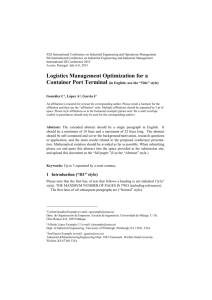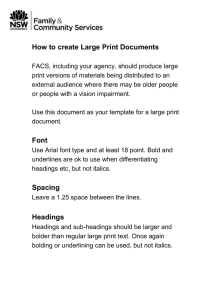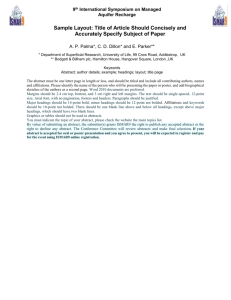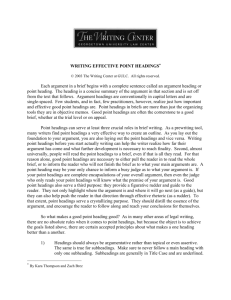LEGAL RESEARCH & WRITING I
advertisement
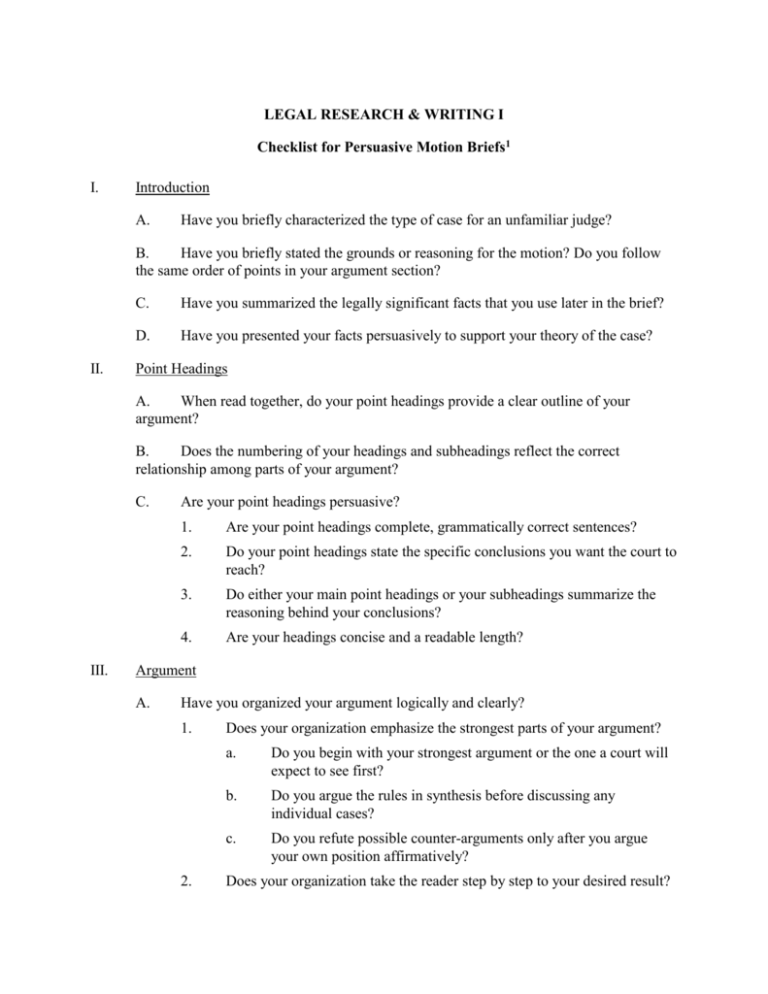
LEGAL RESEARCH & WRITING I Checklist for Persuasive Motion Briefs1 I. Introduction A. Have you briefly characterized the type of case for an unfamiliar judge? B. Have you briefly stated the grounds or reasoning for the motion? Do you follow the same order of points in your argument section? II. C. Have you summarized the legally significant facts that you use later in the brief? D. Have you presented your facts persuasively to support your theory of the case? Point Headings A. When read together, do your point headings provide a clear outline of your argument? B. Does the numbering of your headings and subheadings reflect the correct relationship among parts of your argument? C. III. Are your point headings persuasive? 1. Are your point headings complete, grammatically correct sentences? 2. Do your point headings state the specific conclusions you want the court to reach? 3. Do either your main point headings or your subheadings summarize the reasoning behind your conclusions? 4. Are your headings concise and a readable length? Argument A. Have you organized your argument logically and clearly? 1. 2. Does your organization emphasize the strongest parts of your argument? a. Do you begin with your strongest argument or the one a court will expect to see first? b. Do you argue the rules in synthesis before discussing any individual cases? c. Do you refute possible counter-arguments only after you argue your own position affirmatively? Does your organization take the reader step by step to your desired result? 3. B. C. VI. Have you made your organization clear by using point headings, thesis sentences, and transitions? Have you argued your case in sufficient depth? 1. Have you included enough detail to educate and persuade a busy, unfamiliar reader? 2. Have you supported your arguments well? a. Have you cited to, and explained, the key rules? b. Are your statements of law and facts accurate? Do you address unfavorable law and facts? c. Have you included public policy arguments? d. Have you made your reasoning explicit, instead of just implying it? Have you written persuasively? 1. Have you put favorable information first and last in each section and buried unfavorable information in the middle? 2. Have you emphasized favorable rules and facts by using greater detail and deemphasized, or only summarized, unfavorable rules and facts? 3. Have you chosen your words carefully to be persuasive without sounding biased or overly dramatic? Have you used a respectful tone? Editing and Citation Form A. Have you edited for mechanics, style, and wordiness? B. Have you cited authority for each statement of law? Is your citation form correct? 2 1 Based generally on Laurel Currie Oates & Anne Enquist, Just Briefs (Aspen Publishers 2003). 3



